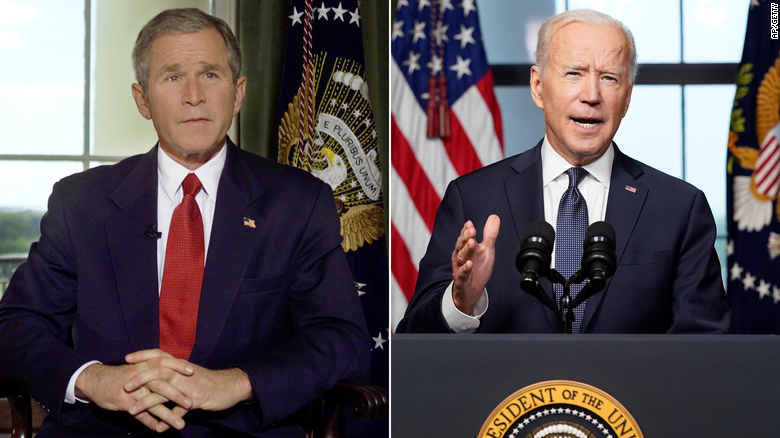| RIP, ticket-splitting Ask anyone how they vote and you are likely to get an answer something like this: "I vote for the best person -- regardless of party."
That is a lie. Or at least a bit of self-delusion.
Here's why:
* 94 out of the 100 US senators are of the same party as the presidential candidate who won their state in 2020.
* 419 out of the 435 House members (96%) elected in 2020 are of the same party as the presidential candidate who won their district.
* 38 of the 50 states (76%) have single-party control, meaning the governor and the majorities in the state House and state Senate are of the same party.
Those figures come courtesy of Doug Sosnik, a longtime Democratic strategist, as part of a broader look at the first 100 days of 2021 in politics.
That one was Maine, where Joe Biden beat Donald Trump by 9 points but Republican Sen. Susan Collins cruised to a 9-point win over her (highly touted) Democratic opponent.
The takeaway is obvious: We are now a nation that votes for the name on the front of the jersey, not the name on the back. Put another way: We now closely resemble the British parliamentary system, in which votes are cast for the political party not the individual candidate.
As Sosnik puts it: "[The] unifying force in American politics is the opposition to the other political party."
This isn't new. The roots of our current polarization can be traced back to (at least) the impeachment of Bill Clinton in the late 1990s. The gap between how partisans viewed George W. Bush and Barack Obama regularly broke records.
Trump, of course, dumped a warehouse's worth of lighter fluid on that partisan fire over his four years in office.
Polarization is likely to get worse before it gets better. "The Democratic Party's ascendent left and a Republican Party dominated by Trumpism will increase partisanship," predicts Sosnik.
-- Chris QUOTE OF THE DAY "I'm sick and tired of this issue being a political cudgel." -- Sen. Chris Murphy, a Connecticut Democrat, says he's open to a more narrow gun background checks bill, saying he "would much rather get something done." NO COINCIDENCE  Same room, same war, 20 years later.
President Joe Biden formally announced his decision to withdraw American troops from Afghanistan from the exact same place in the White House Treaty Room that then-President George W. Bush announced the start of the war on October 7, 2001.
"It is time to end America's longest war," Biden said Wednesday. "It is time for American troops to come home."
CHRIS' GOOD READS The power of governors is being curtailed
Greg Abbott is VERY powerful
Joe Biden's "Major" problem
The public doesn't share the values of reporters
Betting on summer vacations
MUSICAL INTERLUDE Page McConnell, the keyboard/piano player for Phish, just released a new album of ambient music called "Maybe We're the Visitors." And it's very good. TRIVIA TIME!  Question: Who was the first vice president to live at the Naval Observatory?
b. Spiro Agnew c. Dick Cheney d. Walter Mondale  ONE BIG CHANGE  Part of the fencing around the White House, erected after the January 6 insurrection, has been removed. The fencing perimeter that spanned multiple blocks on 17th Street NW has been fully removed, CNN has observed, and a smaller perimeter of fencing remains at the intersection of 17th Street and Pennsylvania Avenue, where staff and press access the White House. You are receiving this message because you subscribed to CNN's The Point with Chris Cillizza newsletter. Was this email forwarded to you? Sign up now to get The Point in your inbox.
Send your tips and thoughts via email to Chris Cillizza and Lauren Dezenski. You can follow Chris and Lauren on Twitter and connect with The Point on:
Our mailing address is:
Copyright © 2021 Cable News Network, Inc., All rights reserved. |
SUBSCRIBE TO OUR NEWSLETTER
Our Youtube Channel
Top Articles
-
Baird and NWSL general counsel Lisa Levine were ousted Friday in the wake of a rep...
-
Plus: The high costs of housing, school board politics and alien life abroad July 16, 2021 View in B...
eseries.in - All Rights Reserved 2023-2025





